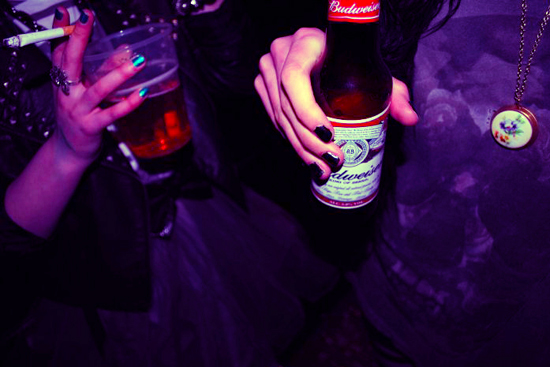Fall 2013 Alcohol Violations Generally Stable
Women accounted for the majority of hospital visits

Women outnumbered men among BU students rushed to the hospital for acute intoxication last fall. Photo by Flickr contributor Shay
About a half dozen more students went to the hospital for acute intoxication last fall than in fall 2012, a small increase that cheered BU officials hoping to keep students safe, says Boston University Police Captain Robert Molloy.
From September through December 2013, there were 90 alcohol-related hospital runs involving students. “While our goal is to have no students transported, we are pleased with the fact that there has been no significant increase” over autumn 2012, Molloy says.
The 2012–13 academic year saw a drop in alcohol violations and hospital runs, and BU leaders hoped to continue that progress this year. They credited new enforcement protocols, in effect for the third year now, with last year’s drop.
In the 2012–13 academic year, 158 students went to the hospital for intoxication, down from 211 the previous year and 248 the year before that.
Driving down booze-fueled hospital runs has been a crucial goal for the University; President Robert A. Brown has highlighted the problems from acute intoxication in his Matriculation addresses and summer messages to families of incoming students. Starting last summer, BU mandated an online alcohol education course, AlcoholEDU, for first-year students.
Student Health Services (SHS) analyzed the fall figures and discovered the majority of last semester’s alcohol transports were women, possibly reflecting women’s preponderance among the student body, says Elizabeth Douglas, manager of wellness and prevention services. Another possible explanation: women have smaller quantities of an enzyme that retards alcohol release in the stomach.
Twenty of the transports involved international students, Douglas says.
Douglas says SHS reviewed the blood alcohol content (BAC) of 69 transported students and found their average BAC was .18. By way of comparison, Massachusetts law defines a drunk driver in most cases as having a BAC of .08 or higher.
“We will be analyzing data from the AlcoholEDU intervention for first-year students and may get some additional information about that group,” says SHS director David McBride.
This was the third fall under BU’s enhanced alcohol enforcement program, modeled on one at the University of California that spurred “significant reductions” in off-campus drunkenness, according to one study. BU’s program, administered in collaboration with Boston and Brookline police, includes increasing police patrols in party neighborhoods, breaking up boisterous parties, making arrests and issuing citations, and publicizing weekly enforcement statistics on BU Today.
The Boston police began a policy in fall 2013 that made arrest the “preferred response” to drinking violations. The city also has an ordinance empowering police to arrest tenants and landlords with apartments that have been the scene of multiple alcohol violations.
The enforcement protocols will resume later this spring and continue next fall, Molloy says.
Comments & Discussion
Boston University moderates comments to facilitate an informed, substantive, civil conversation. Abusive, profane, self-promotional, misleading, incoherent or off-topic comments will be rejected. Moderators are staffed during regular business hours (EST) and can only accept comments written in English. Statistics or facts must include a citation or a link to the citation.